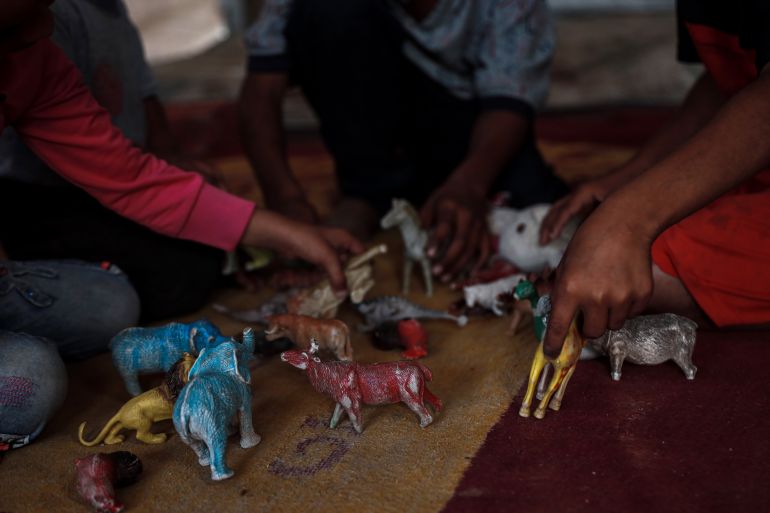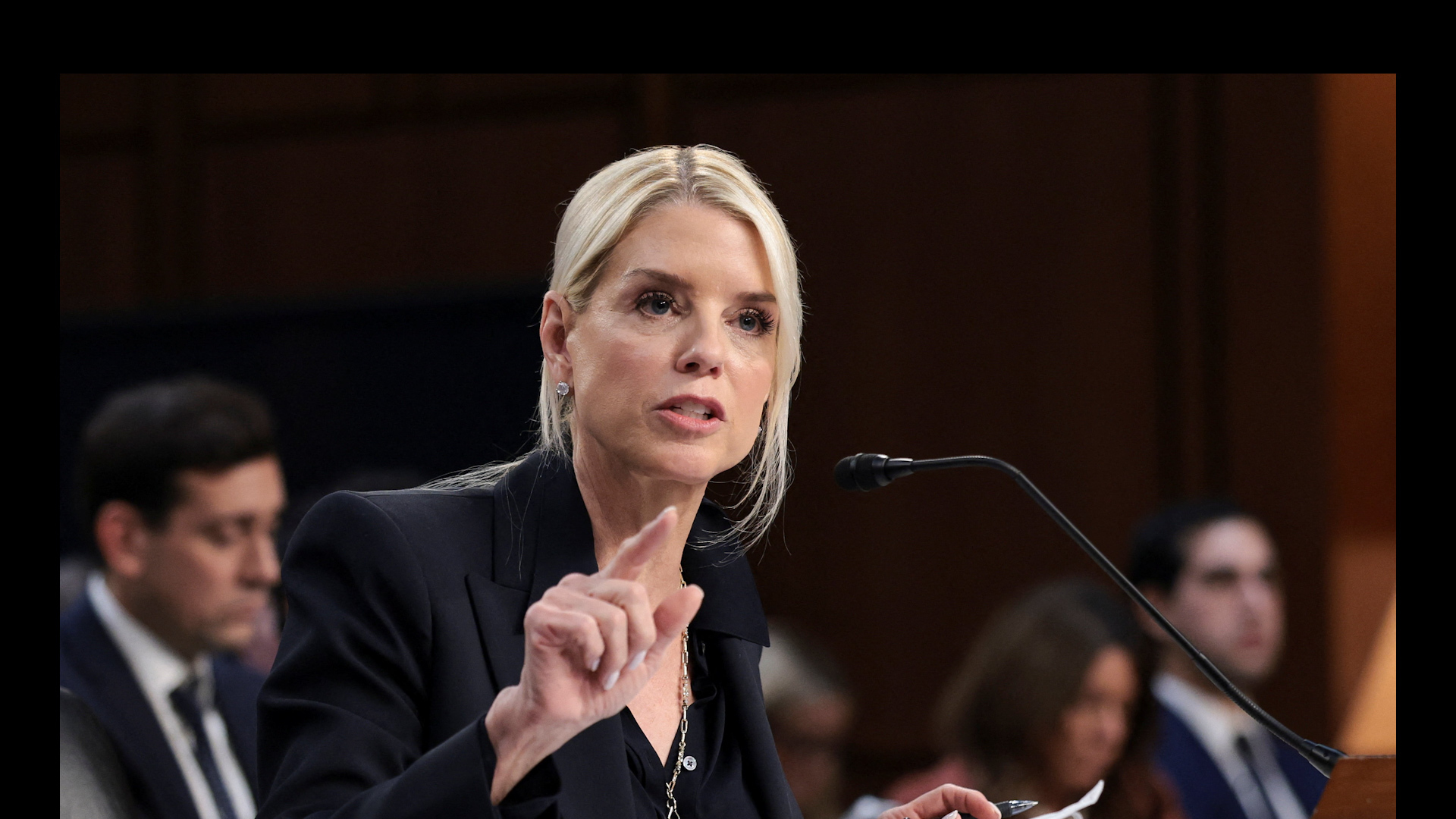Under the buzzing of Israeli drones and warplanes, Jihan Abu Mandeel watched her five young children play with toy animals in their tiny, makeshift tent in Deir Balah, Gaza. It was a brief moment of childhood amid Israel’s ongoing genocide in the besieged enclave.
United Nations experts and the International Association of Genocide Scholars have recognised the genocide, saying Israel has obliterated almost every source of life in Gaza, damaging or destroying 90 percent of buildings by razing hospitals, universities and entire neighbourhoods.
Recommended Stories
list of 3 itemsend of list
Israel has killed at least 67,160 people and injured 169,000. Thousands of corpses remain uncounted, buried under the rubble along with the hopes and dreams of the living and the dead.
“I just want the bloodshed to end,” Abu Mandeel, 41, told Al Jazeera, holding the youngest of her four boys on her lap.
Rebuilding a future
Civilians in Gaza are clinging to hope that a lasting truce is within reach as Hamas and Israel meet for indirect talks in Cairo, Egypt, to discuss a ceasefire proposal by United States President Donald Trump.
Israel has upended countless mediation efforts over the last two years, but Trump appears to be exerting greater pressure this time.
Yet, even if a sustainable ceasefire is reached, Palestinians in Gaza face the daunting task of rebuilding their homeland and communities.
The UN estimates that Gaza will require more than $50bn for reconstruction and that rebuilding the Strip to make it livable again could take at least 15 years.
This is assuming that Israel’s illegal siege does not pose major impediments to reconstruction, as it has after much briefer wars it waged on Gaza, according to a 2017 policy paper by the Brookings Institution.
Azmi Keshawi, an expert on and from Gaza currently based in Doha with the International Crisis Group, explained that any post-war scenario requires regional and international pressure on Israel to allow the entry of construction materials.
“Palestinians are capable of doing the utmost in order to regain their lives,” Keshawi told Al Jazeera.
“But simply having the will to rebuild is not enough… It doesn’t just depend on them,” he said.
Gangs and factionism
While rebuilding is essential for the future of Gaza, there are also fears that the enclave will descend into lawlessness and conflict if Hamas gives up power, which is a clause in the Trump plan.
“One of the advantages of having Hamas [govern] Gaza is that they enforce security,” explained Yaser al-Banna, a journalist still reporting from Gaza.

Throughout the genocide, Israel has deliberately killed Gaza’s security forces and propped up notorious gangs who have stolen the little aid allowed into Gaza to resell it for maximum profit.
While the gangs are a problem now, Keshawi does not think they will last if Israel leaves Gaza, believing that Palestinian society will sideline these elements that most people see as traitors.
However, factional conflict – notably between Fatah and Hamas – could be a problem, he warns.
Fatah controls the internationally recognised Palestinian Authority (PA) in the West Bank, while Hamas retains control of Gaza despite being heavily degraded from fighting Israel.
In 2006, tensions erupted between Fatah and Hamas shortly after the latter won an election to head the PA, an entity born out of the 1993 Oslo Peace Accords between then Palestinian and Israeli leaders.
The result stunned the US and European countries, which had designated Hamas as a “terrorist group” for refusing to recognise Israel or renounce armed resistance to end the occupation.
The US responded by backing Fatah to topple Hamas, leading to a brief civil war. By June 2007, Hamas had expelled Fatah from Gaza, solidifying a split in the Palestinian national movement.

The return of some exiled Fatah officials, backed by regional states and possibly Israel, could lead to score-settling against Hamas and its allies, said Keshawi.
“If Israel allows some of these people to return to Gaza … then they could go after people that supported Hamas,” he told Al Jazeera.
Forever trauma
Those forced to stay in Gaza will have to wrestle with the internal trauma brought on by the devastating genocide. Few, if any, had a moment to process everything they’ve lost – family, friends, homes and a future – in Israel’s relentless onslaught.
In a survey conducted in 2022, before the genocide began on October 7, 2023, Save the Children found that four out of five children in Gaza reported living with depression, grief and fear.
The collective trauma inflicted on Palestinians from Gaza due to the genocide is unlike anything studied or seen in recent years, according to Doctors Without Borders, known by its French initials MSF.
Last year, an MSF psychiatrist, Ahmad Mahmoud al-Salem, treated children from Gaza at a clinic in Amman, Jordan.
He discovered that most suffered from vivid nightmares, depression and insomnia.

What Gaza’s children are experiencing now is unfathomable, Derek Summerfield, an honorary senior lecturer at London’s Institute of Psychiatry, told Al Jazeera.
He pointed out that there are at least 17,000 unaccompanied children in Gaza and that it’s unclear if they will ever experience a safe and stable environment.
“The future of these children doesn’t depend on their ability to overcome trauma because their trauma isn’t over,” he told Al Jazeera.
“It depends on what happens to the society around them. But their entire society is destroyed, and that’s why this is a genocide.”
Abu Mandeel just wants to provide her children with a semblance of a future, like all parents in Gaza.
Her school-age children have already missed two years of formal education due to the genocide, but the geography teacher says she is trying to give them some basic lessons so they don’t fall too far behind.
“I just want their future to be better than ours,” she said. “The constant killing makes me so afraid for my children.
“Honestly, I hope that I can get my children out of Gaza one day,” Abu Mandeel told Al Jazeera.






